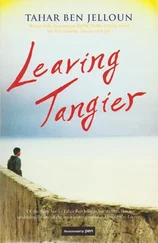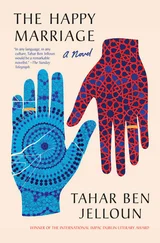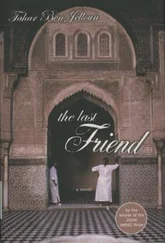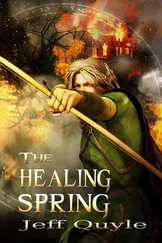It is in the geography between Mohamed Bouazizi’s real life and Ben Jelloun’s creation of his double where readers are invited to explore Mohamed’s desperation, his hopelessness, how he wants to care for his family, and his path toward suicide. These personal elements are perhaps harder to make available through historical inquiry. Through fiction, Ben Jelloun takes up these questions when he imagines Mohamed’s despair because the police confiscate his cart. The author implicates power and its corruption in police harassment and unresponsive municipal officials. He also maps Mohamed’s trajectory toward self-destruction by correlating it with unrelenting and escalating pressure and frustration and, ultimately, fatal desperation about how he could possibly be defeated by the state in caring for his family. Ben Jelloun offers us the chance to walk with this character through the streets of Mohamed’s small town as he encounters corruption and violence. The author renders the tortured complexities of political legitimacy and the relationship between the individual and the state by bringing them to bear on a street vendor and his rickety fruit cart. By imagining his way into Mohamed’s life, Ben Jelloun represents how the state’s reckless use of power ruined a man. The question of why the historical Bouazizi chooses death, and such a painful one, mocks itself because the only source of an answer is unreachable. The question became unanswerable the moment he touched the flame to his clothes. He did not and could not articulate his thinking before dying, so only the question survives. By rendering the incident as a story, Ben Jelloun preserves the question while refusing a facile answer. In fact, any answer would diminish the question’s integrity by tainting it with answers’ certainty. Ben Jelloun gives us in By Fire an intimate look at Mohamed’s last days and then steps away, allowing for question-asking.
By Fire is the first work of fiction on the Arab Spring. Ben Jelloun wrote this novella within a few months; I understood why there was such urgency. The spectacle of the Arab Spring spread worldwide as it happened . Every time a protester on Tahrir Square screamed, there was not a corner of the world where it could not be heard. News of Bouazizi’s self-immolation went viral in moments, and the event demanded immediate attention, coverage, and contemplation. Ben Jelloun was so moved that he decided to fictionalize Bouazizi’s last days. “I saw him on his bed like a white mummy and thought to myself: ‘This man had a life, a youth, a failed love affair, disappointments.’ I wanted to return his humanity to him,” Ben Jelloun told Deutsche Welle (Thomas 2011). To return dignity and humanity to the young man, Ben Jelloun’s ethical responsibility led him to create Bouazizi’s double.
So why write a story that looks so much like the historical event itself? Why call his protagonist Mohamed? Is it because fiction can do what nonfiction often cannot, namely, reach readers at a deeper level and appeal more to their emotions? In fiction, the historical Bouazizi’s face no longer remains just another anonymous face in the crowd. Instead, he becomes a multidimensional character: a son, a brother, a lover, and a marginal subject who takes a radically self-destructive action. Ben Jelloun wanted to capture this critical moment in the life of an individual to show what kind of suffering can lead to suicide.
In September 2013, Ben Jelloun shared some of his thoughts about By Fire with Deborah Treisman, fiction editor of the New Yorker in “This Week in Fiction: Tahar Ben Jelloun”:
I had written articles and an essay attempting to explain the roots of this “Spring.” But those pieces were missing a literary perspective, a fictional perspective that could depart from the raw facts. I needed to express, as a novelist, what I, as an observer and a citizen, was thinking. I’m sure that literature — fiction — has the ability to reach readers more effectively than any television news report. I focused on Mohamed’s story, I closed my eyes, I saw it, and I wrote it. Beyond the specific situation in Tunisia, Mohamed Bouazizi became a valuable symbol for all cultures and all countries in pursuit of dignity. (Treisman 2013)
Ben Jelloun spoke directly to the problem of the tension between the novelist and the historian: “I was faithful to the profound meaning of Mohamed Bouazizi’s terrible act. But I also did my job as a novelist. I imagined his circle, his behavior, his actions. I kept it universal even as I was very tied to the specifics. I think that many people reading this story will recognize themselves in this character or identify with him” (Treisman 2013). By Fire depicts universal themes. Reading By Fire along with The Spark will help readers understand and even identify with Mohamed’s character based on Bouazizi’s real life. The Spark helps us understand the historical figure’s experience in a corrupt, dictatorial regime.
The chapters selected from The Spark focus on former Tunisian president Zine al-Abidine Ben Ali’s corrupt regime; how he deposed President Habib Bourguiba, an educated and a visionary man, in 1987; and Mohamed Bouazizi’s difficult life and death. Unlike By Fire , which takes us into Mohamed’s head, The Spark begins by taking the reader into the heads of Egypt’s Hosni Mubarak and Tunisia’s Ben Ali after both flee like thieves from their countries. It finally dawns on the two dictators that they have lost their grip on power in 2011, after the revolts in Tunisia and Egypt. Using light mockery and humor, Ben Jelloun portrays the two exiled dictators: “While Mubarak has a headache, what is Ben Ali, the Tunisian, who fled from his country on January 14, doing?… What does he do with his days? He watches television. He just lies around. He too [like Mubarak] doesn’t feel like coloring his hair. He is depressed. He lives in a gilded prison [Saudi Arabia].” Throughout the book Ben Jelloun condemns the dictators’ brutality, unmasks their greed, corruption, and total indifference toward their people. After Bouazizi’s brutal suicide, writes Ben Jelloun in The Spark , “with calm and dignity, Tunisians rose as one. It was the police who were violent; their brutality left several dozen dead and hundreds of others wounded. Submissive for twenty-three years to a quiet dictatorship, the people succeeded in bringing down Ben Ali, his family, and his racketeering and mafia clan.”
The Spark also surveys the situations in Egypt, Algeria, Yemen, Morocco, and Libya at the very beginning of the Arab Spring. Ben Jelloun writes, “The Arab Spring exploded victoriously mainly because the conditions were ripe. People spontaneously poured into the streets and decided to go all the way without following the orders of any political leader, party chief, or, much less, leaders of religious movements.” Especially important in this book is Ben Jelloun’s distinction between the words revolt and revolution . For him, a revolt occurs when people rise as one against a regime. Revolts often lack both formal organizations and recognized leaders. The Tunisian revolt is a good example as it began spontaneously when Bouazizi’s desperate act was mis- or overinterpreted as the cue to demand the end to Ben Ali’s dictatorial regime.
Ben Jelloun sees the Arab Spring as a string of revolts and not revolutions. In The Spark he makes a rough comparison between, for example, the Tunisian revolt and the Portuguese Carnation Revolution, which, in 1974, overthrew a forty-year-old dictatorship and gave people the right to vote, free health care, pensions for the elderly, and free public education. The Carnation Revolution was carefully planned and led by Otelo Saraiva de Carvalho. The junior officers of the military simply deposed their Portuguese superiors and set up a three-person junta that guided the country to democratic elections. The Carnation Revolution led to a new, democratic state with entitlements for virtually every class of people. The Portuguese were thrilled to have their repressive regime removed and to see instead respect for civil rights and the rule of law. The Arab Spring revolts, however, failed to have an outcome similar to the Carnation Revolution. Tunisia is the only nation in the region to have emerged from the Arab Spring with a democratic state. “Tunisians have shattered the dogma that citizens of the Arab world must either accept a secular authoritarian status quo or must submit to Islamist authoritarian rule” (Ryan 2014). The New York Times applauded Tunisia’s achievement: “After a long and often fraught process, Tunisia has managed to produce the most liberal constitution in the Arab world, and it has done so through consensus” (“Tunisia’s Remarkable Achievement” 2014). Then, in October 2015, a group of labor, business, legal- and human-rights activists called the National Dialogue Coalition won the Nobel Peace Prize. The Nobel committee cited the coalition’s “decisive contribution to the building of a pluralistic democracy in Tunisia in the wake of the Jasmine Revolution of 2011” (Chan 2015).
Читать дальше











![Anne Blunt - A Pilgrimage to Nejd, the Cradle of the Arab Race. Vol. 1 [of 2]](/books/749489/anne-blunt-a-pilgrimage-to-nejd-the-cradle-of-the-thumb.webp)
![Anne Blunt - A Pilgrimage to Nejd, the Cradle of the Arab Race. Vol. 2 [of 2]](/books/750183/anne-blunt-a-pilgrimage-to-nejd-the-cradle-of-the-thumb.webp)